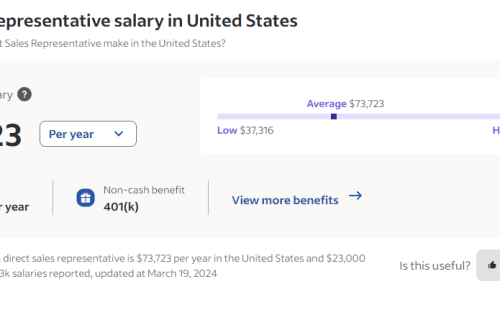This guest series is by Greg McFarlane of Control Your Cash.
How do you get readers to part with their money, especially when said money is scarce?
This year has been particularly tough for businesses and individuals who are all dealing with rising interest rates and cost of living pressures. It’s difficult for most merchants of any kind to make a sale. It’s particularly so if you’re a blogger who wants to advance from engaging readers about your subject of interest to getting those readers to buy something. In an average-to-booming economy, it’s easier to get people to part with their discretionary income, and not that much of a deal if they don’t.
But when belts are tightening across the globe, how do you get readers to buy from you?
This post is the first in a series where we’ll systematically prescribe a foolproof way for you to create worthwhile, lasting products that your readers can actually use—and that they’ll pay for the privilege of owning.
If you’re blogging regularly, and are the kind of blogger who reads ProBlogger, it’s safe to assume that you’re at least amenable to the idea of a digital storefront. Yes, maybe you consider your blog to be strictly a labor of love: something that serves solely to convey your thoughts about woodworking, or Pacific Island languages, for the sheer satisfaction of sharing such with your readers. If that describes you, great.
Yet if you could monetize your blog—sell a product or service of your own creation—you’d at least think about whether any profit you’d make would be worth the effort, right?
We all want a bigger audience. But how can we turn regular readers into paying customers? Having half a million unique visitors means a lot more if even 1% stop to buy what you’re selling. Of course, that implies you’re selling something in the first place.
But what should you sell? Where do we begin?
You need an idea
It all starts with an idea. Really, it does. That’s not just an empty axiom.
(Apologies in advance. The next couple of paragraphs might read like an end-of-chapter exercise from a self-help book. That’s not the intention. Take them literally and don’t read between the lines.)
Answer the following questions, one series at a time. Explanations to follow:
1. What do I have to offer?
- How am I different?
- What makes me unique?
- What can I offer to readers/customers that’d be hard for someone else to duplicate or automate?
Obviously you can only answer these questions for yourself, but I’ll walk you through it with my own set of answers.
My blog, Control Your Cash, is one of a few dozen personal finance advice blogs in existence. But “personal finance” is a wide umbrella. Most of my competitors can be placed into one of several subcategories. Some blogs focus on listing inventive ways to save money; others talk about personal finance exclusively from a Christian perspective; still others do nothing but spend every post comparing different credit cards.
Then there’s mine, which is probably most distinguished by a tone that readers have described as everything from “uncompromising” to “snarky”. Also, Control Your Cash explains complex and arcane personal finance topics in something of a readable and not altogether unfunny style, a skill that took a few years to develop.
That isn’t bragging. That’s determining what makes my site different, and what makes its author’s offerings of potential interest to a customer.
Understanding difference
My blog’s central feature is its thrice-weekly posts, there for the reading and delivered free to whomever subscribes to the site’s RSS feed. I also sell a full-length book on the fundamentals of personal finance for people who know that they know nothing about money, and a series of inexpensive ebooks, each of which deals with a particular topic. (How to read financial statements, how to buy a house, etc.)
The wonderful thing about taking the steps to create products is that few of my competitors, and presumably few of yours, are going to bother. The discipline required to write something 6000 words long, let alone 75,000 words long, intimidates most bloggers. The majority would rather just throw a bunch of unconnected thoughts on the page, run spellcheck (or not), then publish.
One of the elite bloggers in my field of interest is Mike Piper of Oblivious Investor. Even though we both write about personal finance, I hesitate to call him a “rival” because there’s little overlap in what we do. Mike’s tagline describes his site succinctly: “simple, low-maintenance investing.” To that end, he’s written a series of books—one on income taxes, one on accounting basics, and so on. As a certified public accountant, but one who can write captivatingly and with minimal jargon, Mike knew he could own that niche with little fear of serious competition.
You answered the questions, right? The ones at the start of the section?
If it took you more than a few seconds to answer them, stop. If you can’t effortlessly determine what makes your blog and your perspective unique, you can’t very well expect your readers to do it. Remember that they aren’t in the market for a faceless product that had dozens if not hundreds of hands in its creation, like a car or a jacket.
For better or worse, they’re buying you and whatever it is you’re identified with.
Accepting an ugly truth
If you answered the questions and came away with the conclusion that your blog just isn’t that distinctive, save yourself hours of frustration now by acknowledging that. It’ll be far better than creating a suite of products that hardly anyone will buy.
There’s no shame in coming to this realization at the outset. If anything, it gives you a chance to start afresh and establish your point of differentiation before you embark on anything else.
You don’t necessarily need a dedicated following to sell products—many of the people who buy my ebooks do so on their first visit to my site. (Which makes sense. What would compel an 89-time visitor to finally break down and buy something on his 90th visit?)
Now that you’ve determined what makes you different, consider your audience.
2. How can I build a following?
The speed with which people blog and get feedback makes it easy to confuse traditional roles in commerce. Just because someone leaves an insightful comment on your site doesn’t make him your confidant.
Keep it professional. Many bloggers forget that their customers, their advisors, their test marketers, and their collaborators should not all be the same people.
All too often, I’ll see bloggers make this dangerous transition when conversing with their readers. Don’t be afraid to solicit feedback, but on the other hand, don’t cede the responsibility of initiative by asking your readers, “So, what would you like to see?” That’s the equivalent of the chef coming out of the kitchen, wooden spoon in hand, going up to the couple awaiting dinner and saying, “Here, taste this. Tell me what you think.”
The above “strategy”, or non-strategy, is pervasive among bloggers, yet bears little fruit. Name a successful company—any company. Nike, for instance. Their research and development is a little more sophisticated than asking potential customers, “Would you like to see a running shoe with a waffle sole?” Or “How about workout gear that wicks away moisture?”
Sell yourself
If you’re going to sell via your site, you have to be bold. It starts with you, not your customers. Say “I’ve got a sales method that will revolutionize the industry. Here it is in four easy lessons.” Or “Sick of not knowing how to work on your car? Stop putting yourself at the mercy of repair shops. Download my series of instructional videos instead.”
Personalize it. Add value. Sell yourself. Take the examples from the preceding paragraph. Theoretically anyone could offer them. What makes your methods different? Is it your style and demeanor? Have you done research that no one else has done before? Are you creating a service or product that people don’t even know that they require, but won’t be able to live without once you’re done with them?
Ultimately, you want to understand what your readers want and need. But how urgently do they need it? When money is hard to come by, will they pay to have their pain assuaged? (People are much more interested in reducing pain than in embracing pleasure.) How can you improve their lives, and/or make their businesses more profitable?
Know your audience, and get inside their heads—specifically, the product-buying part of their heads. Read the comments they leave. Gauge their interest in and commitment to your blog. Only then can you create and sell content that resonates with and delights your readers, while staying true to your unique voice.
Key points
- It all starts with you. Work out what’s unique about you and your blog.
- Don’t be afraid to start again if your point of difference isn’t easy to define.
- To build a paying clientele, offer something to your readers to gauge their interest.
- Build yourself—your unique point of difference—into what you offer.
- Use these offerings, and your blog as a whole, to get inside your readers heads, and understand how you can uniquely meet their needs.
Next time out, we’ll discuss how to research your competitors, and how to stand out from among them when readers are counting every penny.
Greg McFarlane is an advertising copywriter who lives in Las Vegas. He recently wrote Control Your Cash: Making Money Make Sense, a financial primer for people in their 20s and 30s who know nothing about money. You can buy the book here (physical) or here (Kindle) and reach Greg at [email protected].





